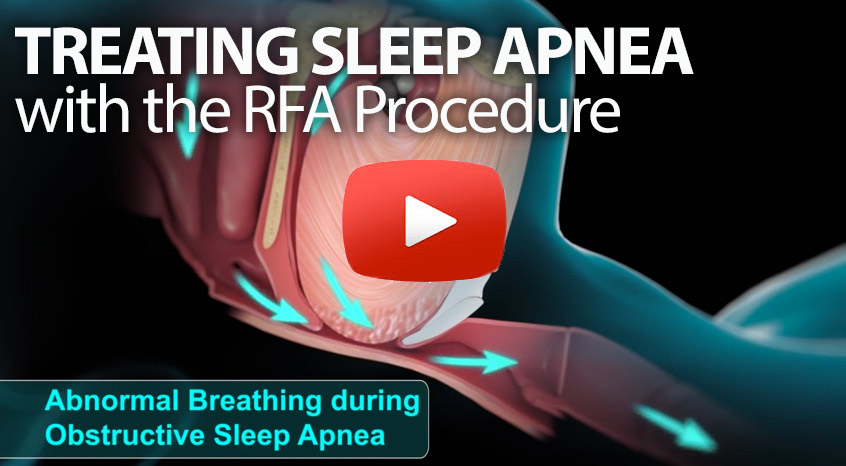You’ve probably heard from friends and family that CPAP (continuous positive airway pressure) machines are the only way to effectively treat apnea. Yet the prospect of sleeping with a mask over your mouth and nose and the whirr of a noisy machine doesn’t appeal at all. If you’re willing to go through several minor office procedures, chances are you won’t have to use a CPAP machine for very long.

RFA treatments are performed under local anesthetic, unlike other sleep apnea surgeries. It also has a shorter recovery and less post-operative pain.
RFA (radio frequency ablation) is a medical procedure in which the electrical conduction system of a dysfunctional tissue in the body is ablated through heat generated from high frequency alternating current in the range of 350-500 kHz. Overall, RFA is used in conjunction with local anesthesia or conscious sedation anesthesia. It was first used as a treatment for sleep apnea by researchers at Stanford University in 1997.
RFA of the tongue is a treatment option for patients who want to regain control of their lives. When the procedure was first performed, it was done as a one-time under general anesthesia This advanced and minimally invasive procedure takes place in office over the course of five to eight office visits, with most averaging six visits. Total time for the procedure is about an hour for the initial visit and 30 minutes for subsequent visits. Patients can drive themselves home immediately afterward.
Having an RFA treatment performed is much like going to the dentist’s office. The back of the tongue receives anesthesia before small amounts of temperature-controlled energy are directed to the tongue base at the back of the throat. As the treated area heals, the tissue shrinks in size and tightens. That portion of the tongue that blocked the airway becomes less of an obstruction over the course of treatments.
RFA treatments are performed under local anesthetic, unlike other sleep apnea surgeries. It also has a shorter recovery and less post-operative pain, often requiring only over-the-counter pain killers to alleviate what may feel like a sore throat. Recovery time for other surgical procedures is usually several weeks and typically requires the use of narcotics for several days after surgery. Other benefits of RFA include:
- Decrease in daytime sleepiness and fatigue
- Refreshing sleep
- Positive behavioral changes
- Improved memory and concentration
- Decreased risk for heart disease, heart failure and stroke
- Reduced risk of car accidents
- Targeted treatment does not produce collateral damage
Perhaps the most important advantage of choosing RFA is that is that it can be a cure for obstructive sleep apnea (OSA), allowing some patients to be totally free of OSA, while others experience a significant reduction in symptoms.
RFA is different from other forms of electrical energy in that it does not require high temperatures to be effective. The low-frequency radio waves it uses are sufficient to produce small amounts of heat via ionic agitation or friction. The friction causes the targeted tissue to scar, thereby changing the shape of the tongue through coagulation necrosis, inflammation and fibrosis.
Another important advantage is that healthy collateral tissue does not incur damage during treatment to targeted areas. This is particularly important for treating the back of the tongue as the head and neck area is loaded with veins and capillaries. Studies of tissue that has been treated via RFA often show that a clear boundary exists between treated and non-treated tissue.
RFA is generally used in patients with mild to moderate forms of obstructive sleep apnea and who do not have morbid obesity. Sometimes it is recommended as part of a multilevel pharyngeal therapy.
If you or someone you know is in need of a better night’s sleep, contact us for a no obligation consultation. We are the sleep specialists at Chevy Chase ENT located in the Virginia, Maryland, and Washington D.C. metro area dealing with sleep apnea and sleep-related problems. We can help diagnose your condition, recommend whether a sleep study would be beneficial, and offer you a variety of treatment options including CPAP, Radio Frequency Ablation (RFA) and more.
